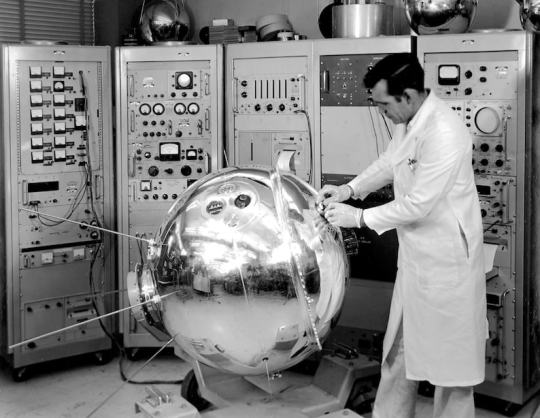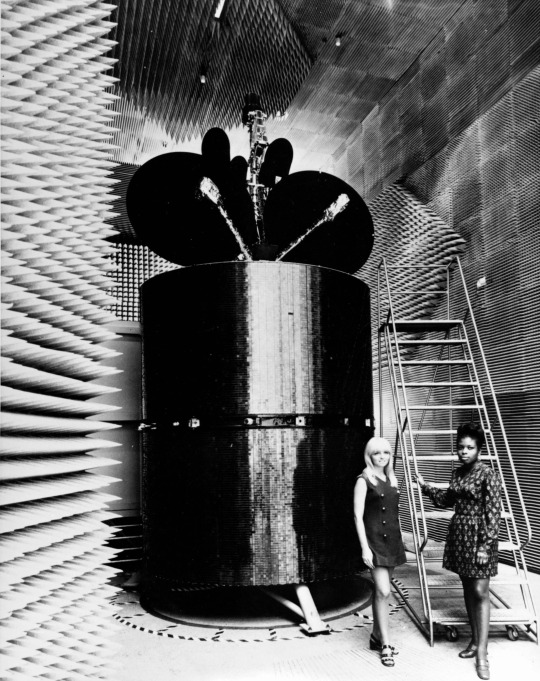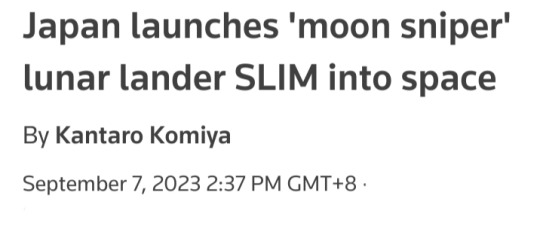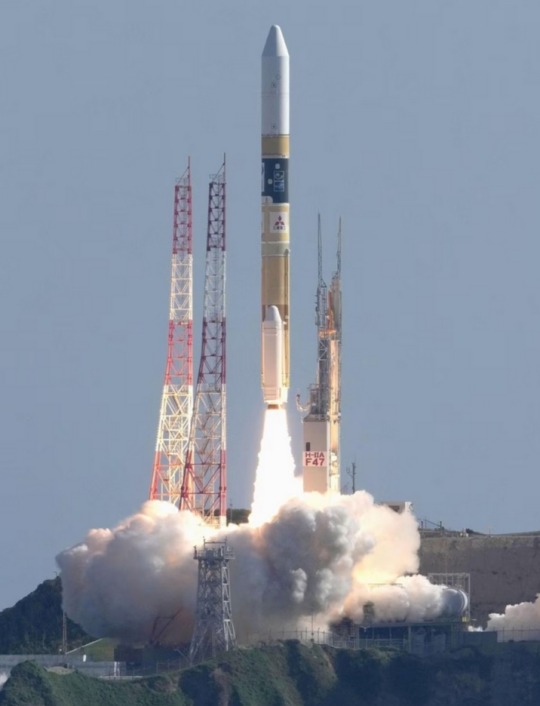#spacecraft and satellites
Text
NASA's Orion spacecraft snaps a selfie on its journey beyond the far side of the moon | CNN
NASA’s Orion spacecraft snaps a selfie on its journey beyond the far side of the moon | CNN
CNN
—
NASA released a selfie taken by the Orion capsule and close-up photos of the moon’s crater-marked landscape as the spacecraft continues on the Artemis 1 mission, a 25-and-a-half day journey that will take it more than 40,000 miles beyond the far side of the moon.
Orion’s latest selfie — taken Wednesday, the eighth day of the mission, by a camera on one of the capsule’s solar arrays —…
View On WordPress
#aviation and aerospace industry#Business#business and industry sectors#celestial bodies and objects#earth&x27;s moon#economy and trade#government organizations - us#internet and www#NASA#planets and moons#Selfies#social media#Space and Astronomy#Space exploration#Space industry#spacecraft and satellites#Technology#us federal departments and agencies#us government independent agencies
0 notes
Text
NASA, SpaceX to study boosting Hubble to higher orbit in a bid to extend its life | CNN Business
NASA, SpaceX to study boosting Hubble to higher orbit in a bid to extend its life | CNN Business
Sign up for CNN’s Wonder Theory science newsletter. Explore the universe with news on fascinating discoveries, scientific advancements and more.
CNN
—
Officials at NASA have signed a Space Act Agreement with SpaceX to investigate the benefits and risks of having a private mission provide service to NASA’s nearly 33-year-old Hubble Space Telescope, boosting it to a higher orbit to extend its…

View On WordPress
#aviation and aerospace industry#business#business and industry sectors#companies#economy and trade#government organizations - us#nasa#observatories and telescopes#science#space and astronomy#space exploration#space industry#spacecraft and satellites#spacex#us federal departments and agencies#us government independent agencies
0 notes
Text

Engineer working on the Explorer 17 satellite, successfully launched in April of 1963 to measure atmospheric density.
237 notes
·
View notes
Text

天问一号 🛰
#hello everybody i am back again with old man mecha musume propaganda#tianwen 1#tianwen#spacecraft#gijinka#satellite#personification#also this was drawn on cn new year so GONG XI FA CAI
27 notes
·
View notes
Text

Intelsat IV In An Anechoic Chamber | 1972
27 notes
·
View notes
Text

Nano! The one in a million first Moldovan satellite 🛰️
#Traveler comic#Comic#oc#my art#original character#friends ocs#satellite#gijinka#space#spacecraft#cubesats#moldova#silly#goober#nanosatellite
29 notes
·
View notes
Text


TOKYO, Sept 7 (Reuters) - Japan launched its lunar exploration spacecraft on Thursday aboard a homegrown H-IIA rocket, hoping to become the world's fifth country to land on the moon early next year.
Japan Aerospace Exploration Agency (JAXA) said the rocket took off from Tanegashima Space Center in southern Japan as planned and successfully released the Smart Lander for Investigating Moon (SLIM).
Unfavourable weather led to three postponements in a week last month.
Dubbed the "moon sniper," Japan aims to land SLIM within 100 metres of its target site on the lunar surface.
The $100-million mission is expected to start the landing by February after a long, fuel-efficient approach trajectory.
"The big objective of SLIM is to prove the high-accuracy landing ... to achieve 'landing where we want' on the lunar surface, rather than 'landing where we can'," JAXA President Hiroshi Yamakawa told a news conference.

The launch comes two weeks after India became the fourth nation to successfully land a spacecraft on the moon with its Chandrayaan-3 mission to the unexplored lunar south pole.
Around the same time, Russia's Luna-25 lander crashed while approaching the moon.
Two earlier lunar landing attempts by Japan failed in the last year.
JAXA lost contact with the OMOTENASHI lander and scrubbed an attempted landing in November.
The Hakuto-R Mission 1 lander, made by Japanese startup ispace (9348.T), crashed in April as it attempted to descend to the lunar surface.

SLIM is set to touch down on the near side of the moon close to Mare Nectaris, a lunar sea that, viewed from Earth, appears as a dark spot.
Its primary goal is to test advanced optical and image processing technology.
After landing, the craft aims to analyse the composition of olivine rocks near the sites in search of clues about the origin of the moon. No lunar rover is loaded on SLIM.
Thursday's H-IIA rocket also carried the X-Ray Imaging and Spectroscopy Mission (XRISM) satellite, a joint project of JAXA, NASA and the European Space Agency.
The satellite aims to observe plasma winds flowing through the universe that scientists see as key to helping understand the evolution of stars and galaxies.

Mitsubishi Heavy Industries (7011.T) manufactured the rocket and operated the launch, which marked the 47th H-IIA rocket Japan has launched since 2001, bringing the vehicle's success rate close to 98%.
JAXA had suspended the launch of H-IIA carrying SLIM for several months while it investigated the failure of its new medium-lift H3 rocket during its debut in March.
Japan's space missions have faced other recent setbacks, with the launch failure of the Epsilon small rocket in October 2022, followed by an engine explosion during a test in July.
The country aims to send an astronaut to the moon's surface in the latter half of the 2020s as part of NASA's Artemis programme.
https://www.reuters.com/technology/space/japan-launches-rocket-carrying-moon-lander-slim-after-three-delays-2023-09-06/
youtube
Japan launches 'Moon Sniper' mission | AFP
7 September 2023
Japan's "Moon Sniper" mission blasted off Thursday as the country's space programme looks to bounce back from a string of recent mishaps, weeks after India's historic lunar triumph.
#H-IIA rocket#Japan#lunar exploration spacecraft#SLIM#moon sniper#Japan Aerospace Exploration Agency (JAXA)#Tanegashima Space Center#Smart Lander for Investigating Moon#Hiroshi Yamakawa#Hakuto-R Mission 1 lander#ispace#Mare Nectaris#X-Ray Imaging and Spectroscopy Mission (XRISM) satellite#JAXA#NASA#European Space Agency#Mitsubishi Heavy Industries#Artemis#space#space rocket#Youtube#Chandrayaan-3 mission#Luna-25 lander#India#Russia#moon#moon landing
22 notes
·
View notes
Text
Out-of-service satellites must be removed within 5 years, FCC says | CNN Business
Out-of-service satellites must be removed within 5 years, FCC says | CNN Business
Sign up for CNN’s Wonder Theory science newsletter. Explore the universe with news on fascinating discoveries, scientific advancements and more.
Washington
CNN Business
—
Satellites that are no longer in service must get out of the sky far more quickly under a new rule adopted by US federal regulators Thursday — and it’s all in the name of combating the garbage in Earth’s orbit.
Unused…
View On WordPress
#aviation and aerospace industry#Business#business and industry sectors#celestial bodies and objects#earth#economy and trade#federal communications commission#government organizations - us#planets and moons#satellite industry#satellite technology#Space and Astronomy#Space exploration#Space industry#space shuttle#spacecraft and satellites#Technology#telecommunications industry#us federal departments and agencies#us government independent agencies
0 notes
Text

Earth-Sun eclipse, as seen by NASA’s Solar Dynamics Observatory (SDO) satellite in 2011. Launched in 2010, SDO continues to diligently monitor the sun to this day.
“Twice a year, SDO enters an eclipse season where the spacecraft slips behind Earth for up to 72 minutes a day. Unlike the crisp shadow one sees on the sun during a lunar eclipse, Earth's shadow has a variegated edge due to its atmosphere, which blocks the sun light to different degrees depending on its density. Also, light from brighter spots on the sun may make it through, which is why some solar features extend low into Earth's shadow.” - NASA
(©)
#nasa#space#spaceflight#science#engineering#spacecraft#technology#space exploration#aerospace#sun#solar#solar dynamics observatory#nasa sdo#eclipse#earth#satellite#astrophotography#solar system#star
89 notes
·
View notes
Text

Art Fight [Werewolf] Attack!
Спутник 1, 2 & Объект Д (3) by @robinwaaaaa
#oouugh they all make so happy <3#also im glad you like it :)/#artfight#art fight#art fight 2023#team werewolf#team werewolves#not my oc#illustration#drawing#art#desolate_art#robot#mech#sputnik#satellite#spacecraft#ussr#cosmonaut#aurora#artists on tumblr#digital art#artwork#character design#small artist#space#machine#humanoid
20 notes
·
View notes
Text

Blorbos from my space agencies
57 notes
·
View notes
Photo

Source details and larger version.
Here's my collection of vintage outer space imagery.
13 notes
·
View notes
Text



Sorry I died I was hit with a new hyperfixation
Have some concept art for new OCs
#First it was space then it was spaceCRAFT I love me#Shoutout to user Robinwaaaaa for hurling me into the fandom with his pog art#Now I'm sentimental over satellites ✨️✨️#digital art#concept art#'concept art doesn't need to be perfect' well my brain says otherwise sadly#digital illustration#oc artwork#spacecraft#personification#gijinka#gijinka art#nasa#astronomy#fanart#technically?????#jwst#juno spacecraft#lucy spacecraft#hubble#hubble space telescope#james webb space telescope
98 notes
·
View notes
Photo

ICE Sat(ellites), that is all
#art#gijinka#i used to post this kinda thing on twitter all the time#before I stopped#well more like I took a long break#space#spacecraft#satellite#girls#personification#personified spacecraft
34 notes
·
View notes
Text
Firefly successfully launches unmanned rocket | CNN Business
Firefly successfully launches unmanned rocket | CNN Business
CNN
—
Texas-based commercial rocket company Firefly launched a rocket into space Friday morning, about a year after a previous attempt ended in an explosion.
The company announced “100% Mission success” on Twitter.
The Alpha rocket launched at 12:01 a.m. Pacific time from Vandenberg Space Force Base in California.
It was originally set to launch September 11, but that was scrapped because…
View On WordPress
#Animals#aviation and aerospace industry#Business#business and industry sectors#economy and trade#insects and arachnids#life forms#Space and Astronomy#Space industry#spacecraft and satellites
0 notes
Text
juice patch........
#IT'S 40ZŁ!!!!!!!!#it's so pretty though....generally esa has really nice designs of their mission stuff idk#not sure if i could even order any but. eep....#i'll just have to do something on my own as always!#i have some red and white fabric i could to like. well i could do something fun with it#i just love satellites so much. spacecrafts in general....
23 notes
·
View notes